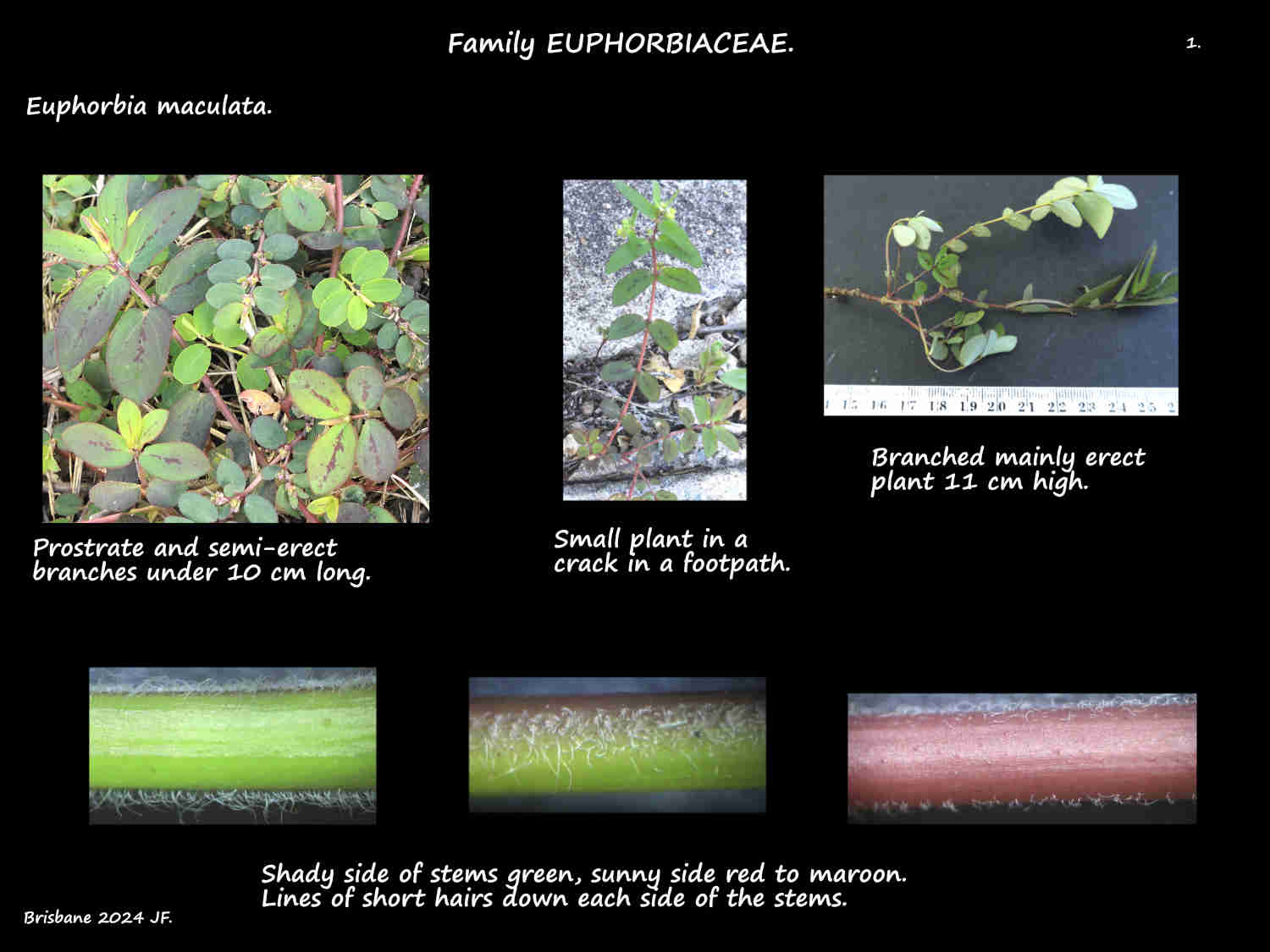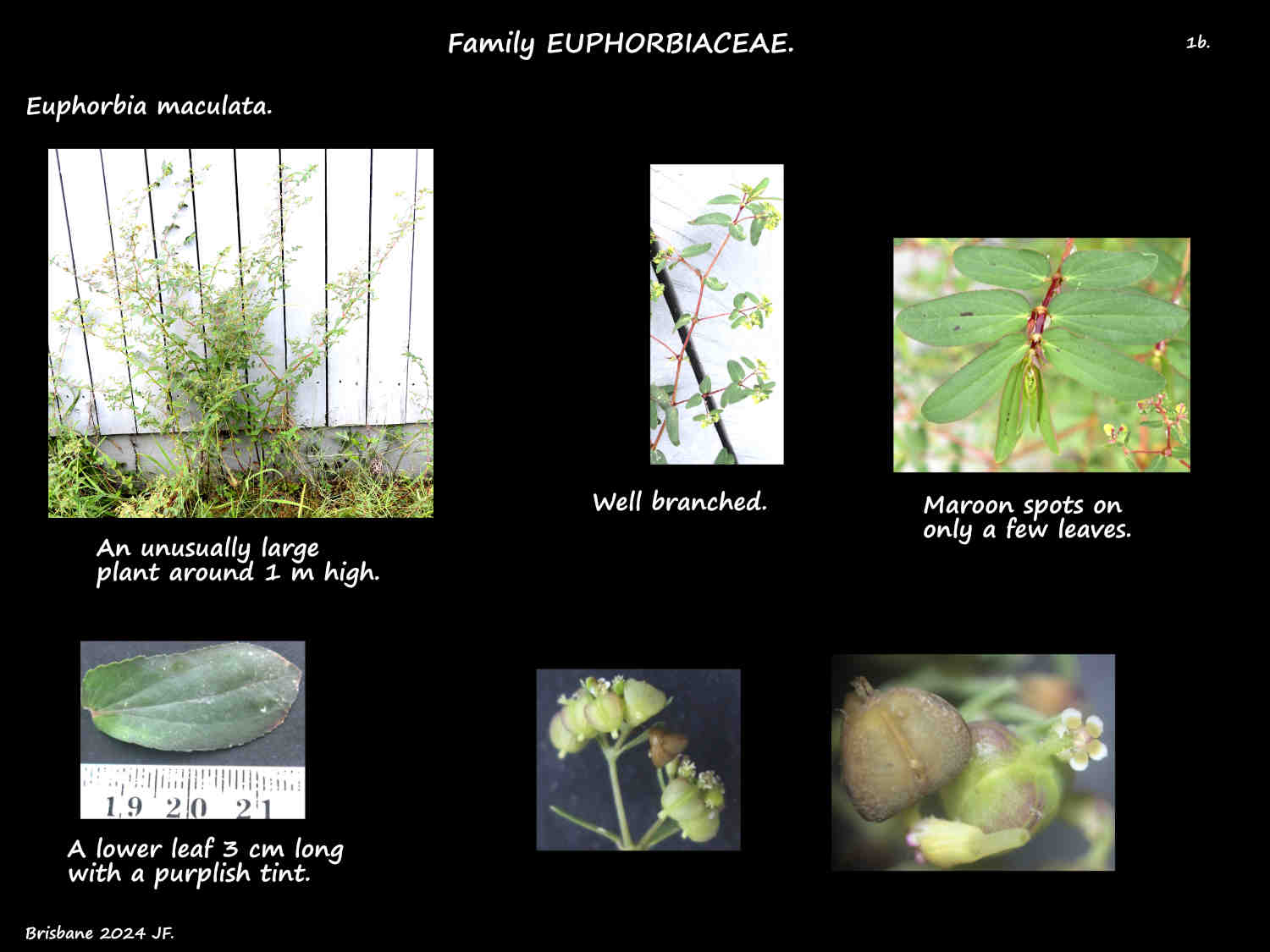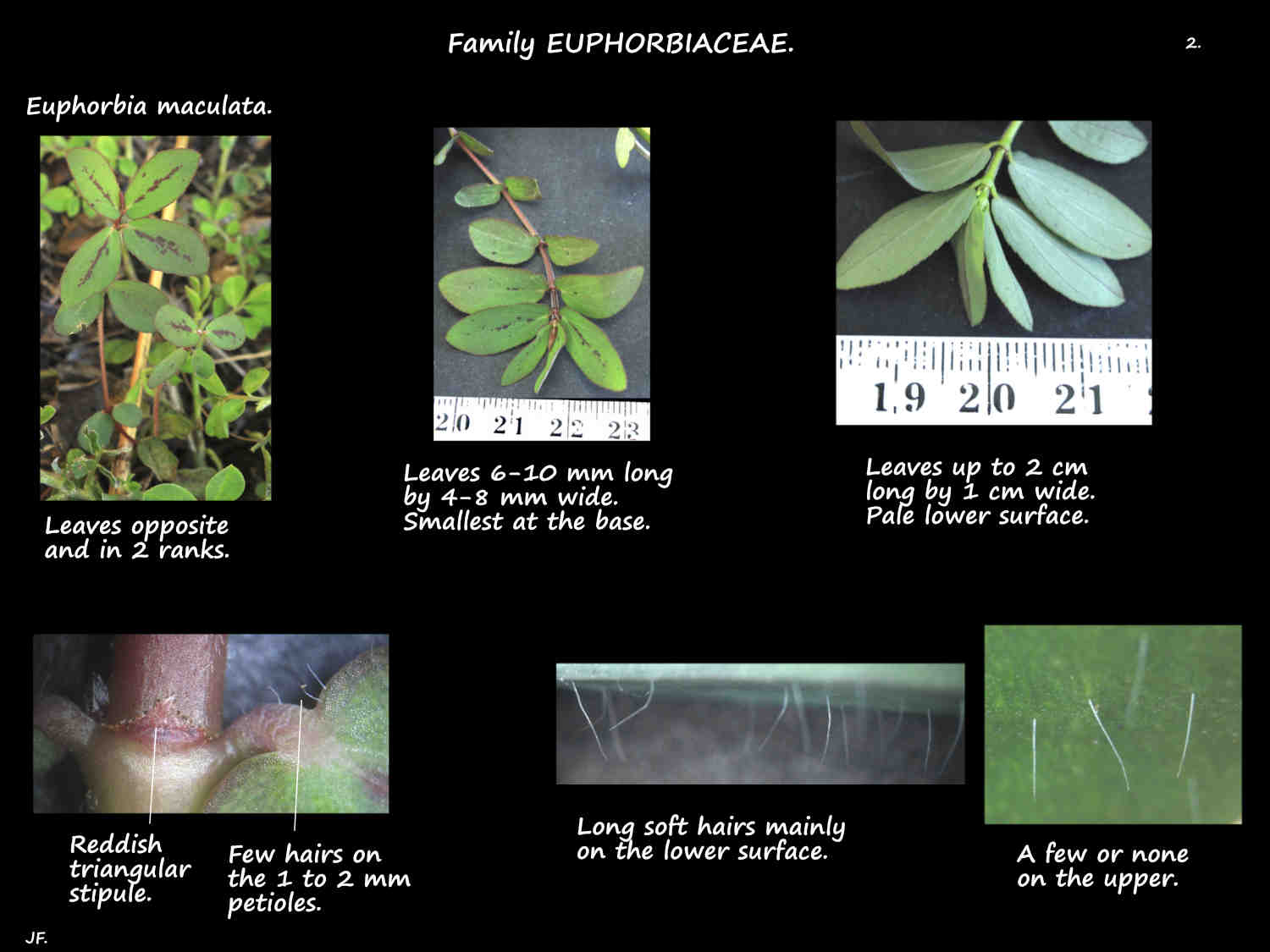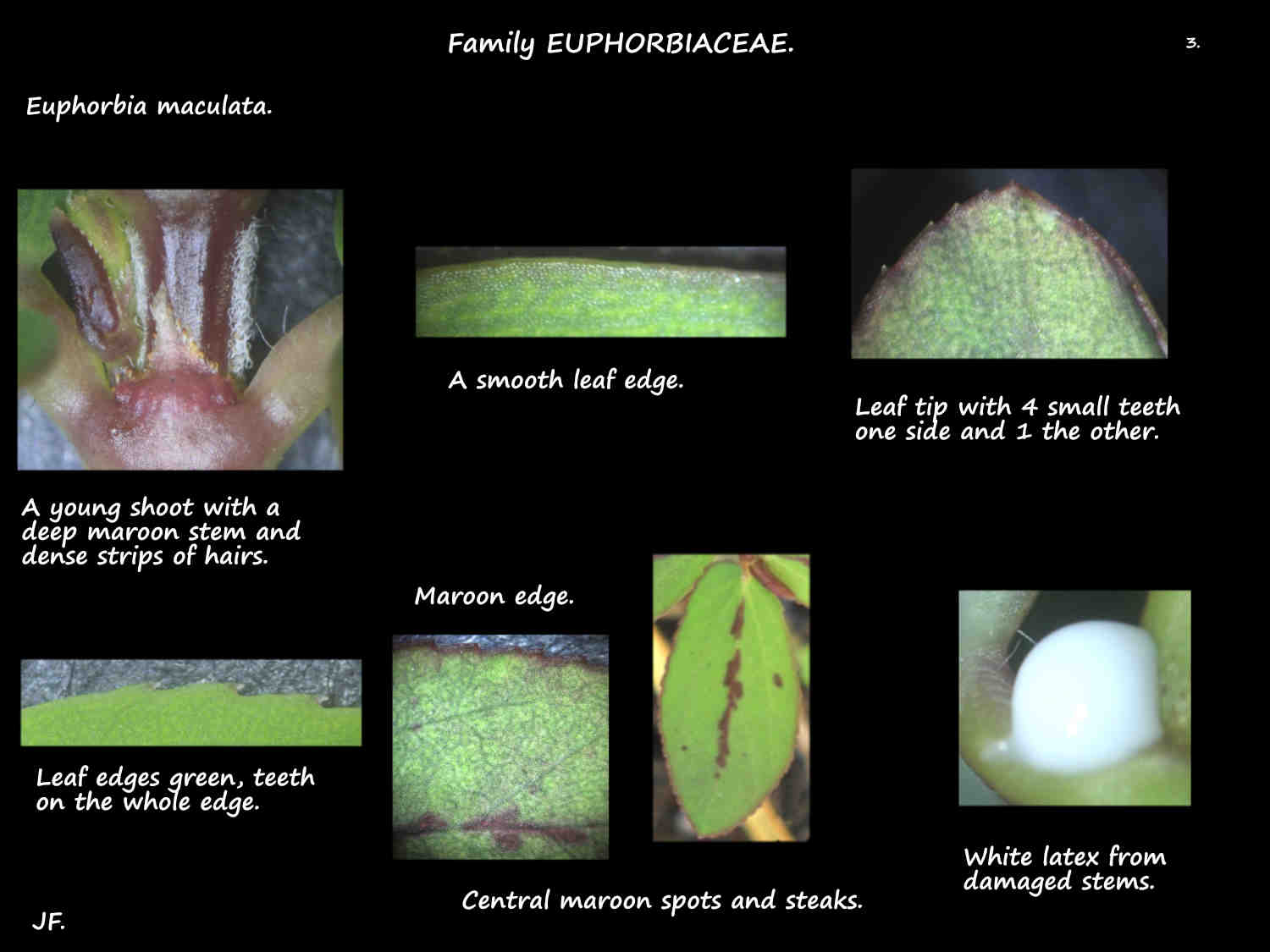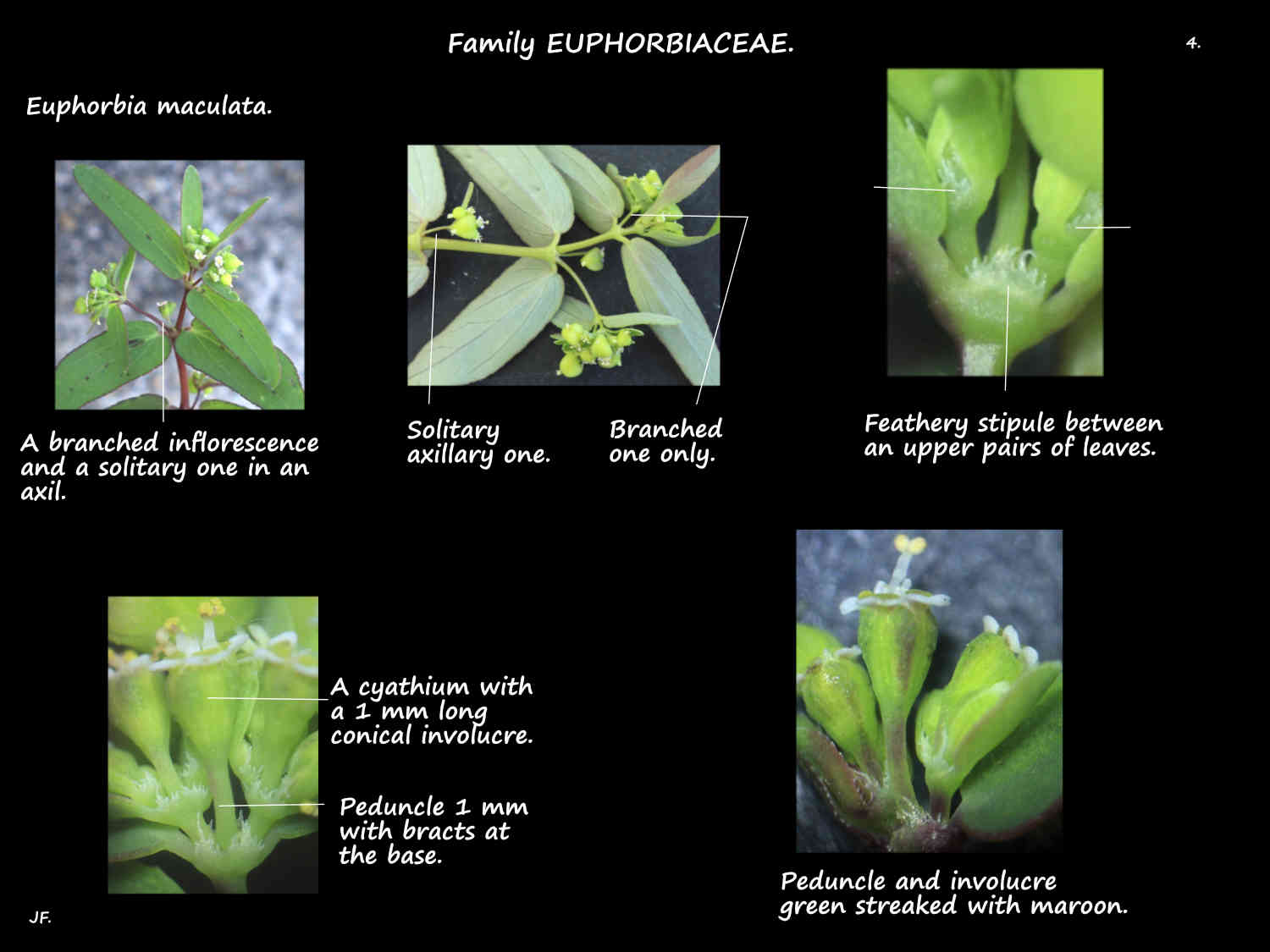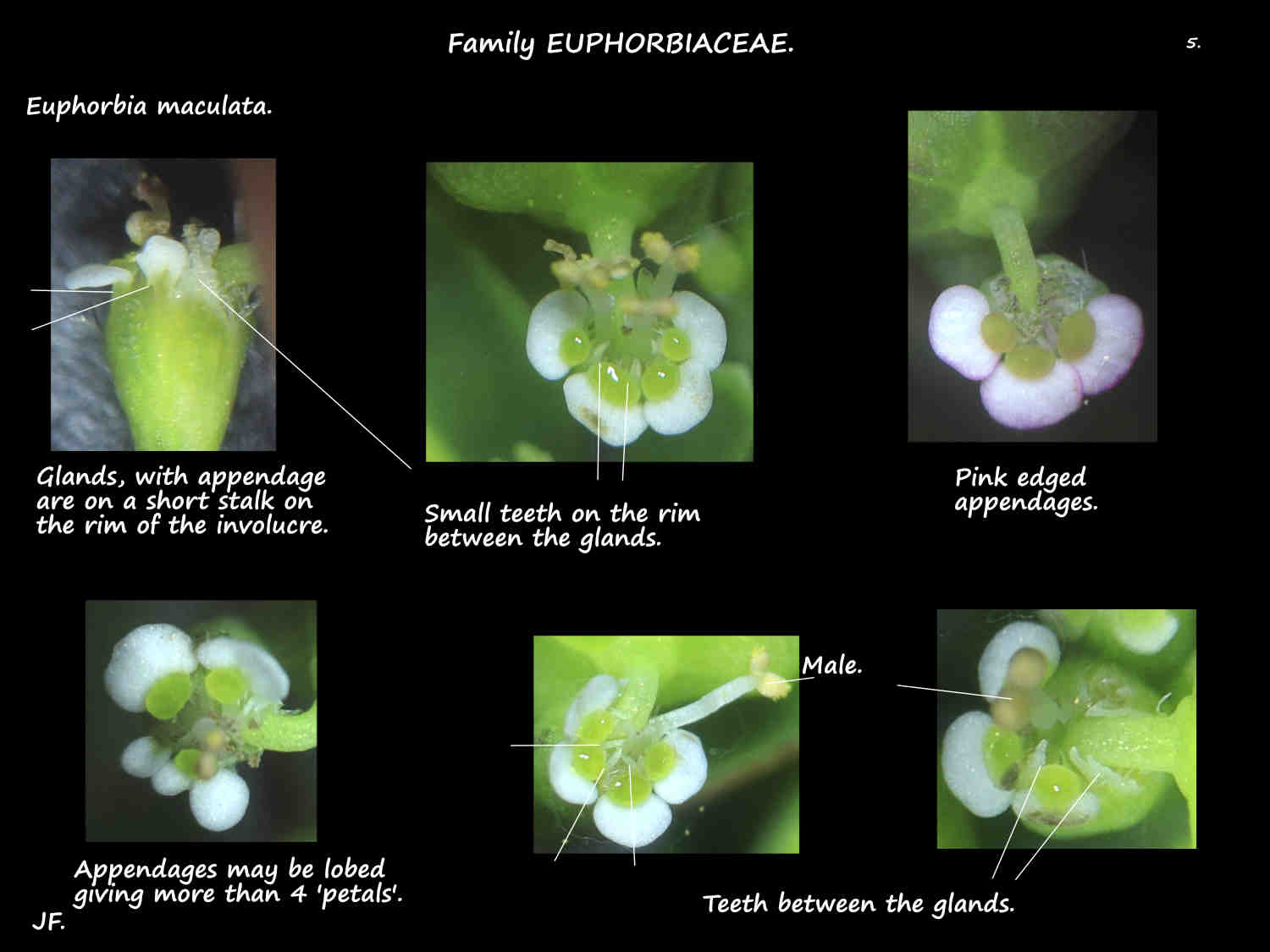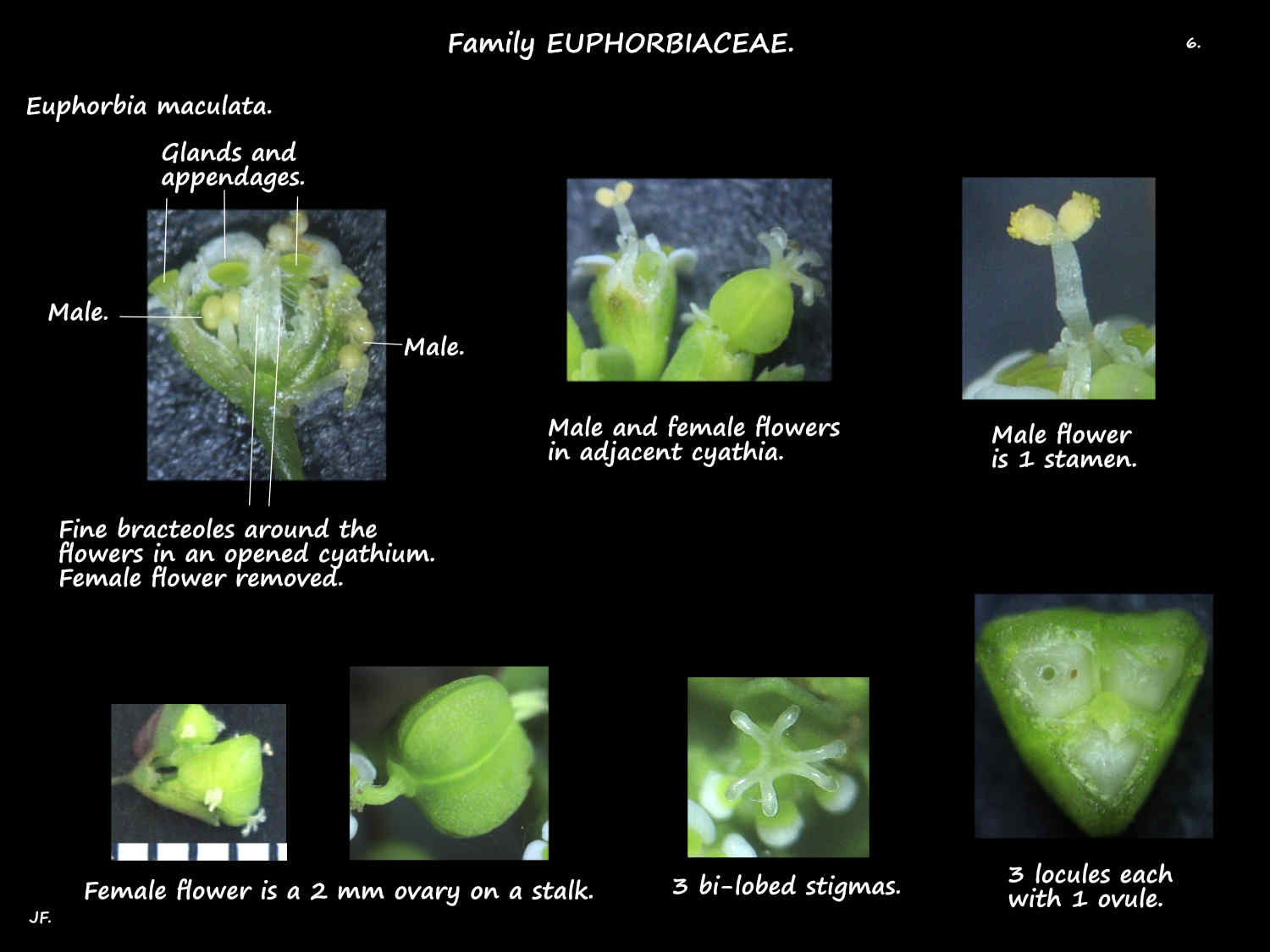Euphorbia maculata.
An introduced plant also known as Chamaesyce maculata.
It has numerous common names including Eyebane, Milk purslane, Milk spurge, and Prostrate or Spotted spurge.
It is a common weed usually seen in cracks in footpaths, paved areas etc.
The annual herbs grow from a long thick taproot.
There may be erect branched stems 10 to 20 cm high.
Most are prostrate stems, up to 30 or 40 cm long that creep along the ground.
Prostrate stems do not root at the nodes but they can form dense mats.
Stems are commonly red to burgundy but when not exposed to the sun they may be green.
Stems have short simple hairs and exude white latex when damaged.
Opposite pairs of leaves are on petioles 1 to 2 mm long.
On either side of the stem between the petiole bases is a stipule.
Only 1.5 mm wide they are a shallow triangular shape sometimes with a fringed edge.
Leaf blades are from 3 to 13 (20 or 30) mm long by up to 10 mm wide.
The smaller ones are at the bottom of the stem.
They are oblong to elliptic with a mostly rounded tip and an asymmetric base.
The edges may be smooth but typically there are small teeth near the tip or all or part way down one or both sides.
There may be a few long soft hairs on the petiole and the blade mainly below.
Typically there is a maroon streak or line of spots down the centre of the upper surface.
Despite this being a characteristic feature it is not present on many plants.
The whole upper surface may be a diffuse reddish colour or just the edges.
The lower surface is a uniform pale green.
Inflorescences are solitary in the upper leaf axils or small branched terminal clusters (or sometimes both in the axils).
Flowers are in specialised structures called cyathia that are on a peduncle 1 to 2 mm long.
A cyathium has a conical green and reddish involucre 1 mm long.
On the rim are 4 green glands on short stalks with an appendage under the gland.
The white or pinkish 0.5 mm long and sometimes lobed appendages can be mistaken for petals of which there are none.
On the rim, between the glands are 4 tiny teeth.
Each cyathium has 1 female flower surrounded by 4 or 5 male flowers with slender bracteoles around them.
Male flowers are a single stamen with a small bi-lobed anther.
The female flower is a large ovary on a thick stalk or stipe with a single style and 3 stigmas each with 2 linear lobes.
Fruit are a slightly flattened sphere with 3 lobes separated by shallow vertical grooves.
Up to 2 mm across they may have a few hairs on the smooth surface.
Maturing from green to brown each chamber has a pale brown, 1 mm angled seed.
J.F.

